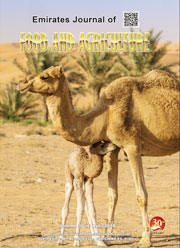VARIATION OF YIELD, MILLING, TECHNOLOGICAL AND RHEOLOGICAL CHARACTERISTICS IN SOME EGYPTIAN BREAD WHEAT (TRITICUM AESTIVUM L.) CULTIVARS
DOI:
https://doi.org/10.9755/ejfa.v22i2.4896Keywords:
wheat, Triticum aestivum L., yield, grain quality, rheological properties, dough.Abstract
: A field experiment was conducted to evaluate yield, milling, technological and rheological characteristics of four Egyptian bread wheat cultivars (Gemmeiza 7, Gemmeiza 9, Sakha 93 and Giza 168). Results showed that Gemmeiza 9 had the highest number of spikes per m2 , number of grains per spike and grain yield. Gemmeiza 7 had the highest fine and coarse bran, protein, wet and dry gluten percentages as well as the best farinograph and extensograph properties (dough development time, dough stability time and dough resistance to extension). Sakha 93 had higher flour and carbohydrate percentages than the other cultivars. Consequences for breeding are discussed.










 .
. 